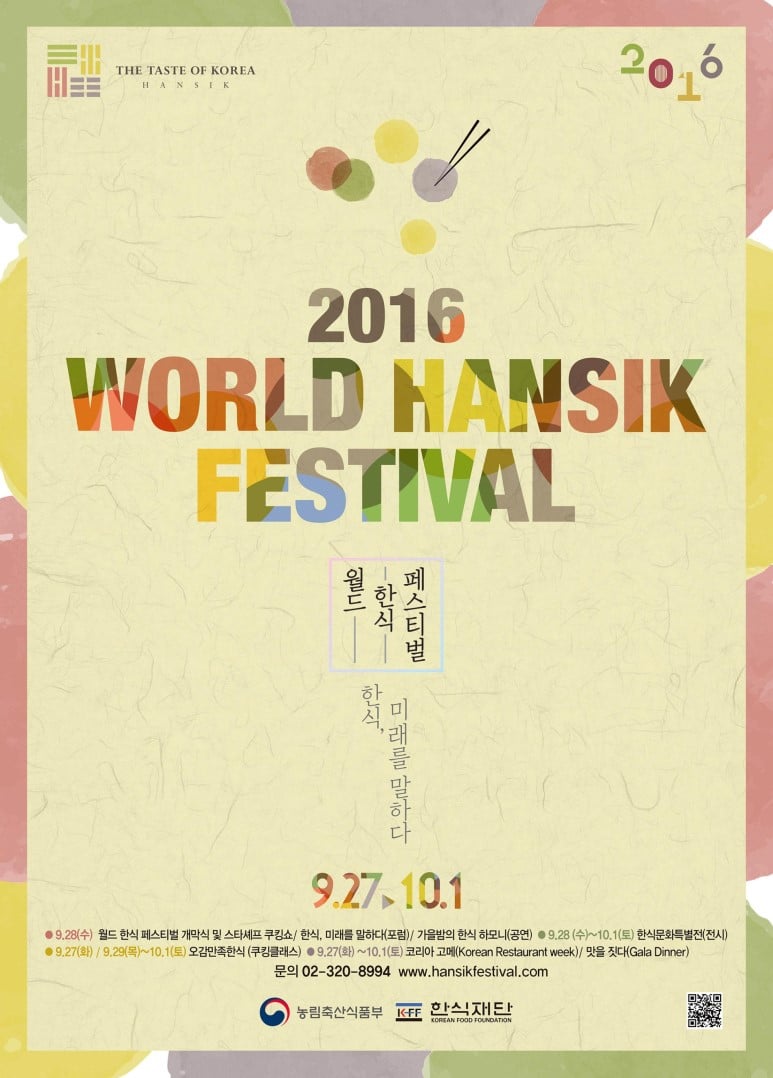By Kim Ji-soo
Yoon Sook-ja, chairwoman of the Korean Food Foundation, remembers the 1988 Seoul Olympic Games like it was yesterday. At the time, she was teaching at a college in Chuncheon, Gangwon Province, when she was one among several experts called by the government to oversee the meals for participating athletes and officials at the first Olympic Games ever hosted in Korea.
“I still remember how one athlete took a pile of kimchi on his plate despite our warning that it could be spicy,” Yoon said last week. “The athlete, however, ate it all, sweating (from the spiciness), and that’s when I knew Korean food would appeal globally.
During the 1988 Seoul Olympics, the then government of Roh Tae-woo envisioned and worked to create a door through the sporting event to show that the new Korea was slowly stepping away from its authoritarian past and standing on the cusp of a booming economy.
Three decades later, the world is more knowledgeable about Korea, and Yoon hopes to create a window to refined Korean cuisine, especially with the upcoming 2018 Winter Olympic Games. Five hundred days before the Games, the foundation and organizing committee will present the top 10 most loved Korean dishes in the world, Monday. Then from Sept. 27 through Oct. 1, the foundation will co-host with the Ministry of Agriculture, Food and Rural Affairs, the 2016 World Hansik Festival holding cooking classes, a restaurant week and other programs to promote refined Korean food.
“Let’s take, for example, samgyetang, a traditional chicken soup made with whole young chicken stuffed with ginseng, sticky rice and garlic. It retains the traditional taste, but we could present it in a form or style that foreigners may find easier to eat. I call it refining Korean food,” Yoon said. “For example, it would be cooked exactly the same way, but the chicken meat can be sliced and then rolled and put into the soup,” Yoon said.
She suggests it could be styled such that it is more palatable for foreign eaters; while the healthy ingredients are retained, the dish will be served on a plate to make it easier to eat. Yoon, a veteran author on Korean cuisine, head of the Institute of Traditional Korean Food and member of the Presidential Committee of Cultural Enrichment, said all the ingredients will remain — including the dates, garlic and sticky rice — as well as how the chicken is cooked. She notes how the menu at the presidential office also includes both traditional and modern Korean food.
“I believe all types of Korean food, from the royal court cuisine, to local cuisine, to temple food and regular meals, the traditional ingredients and essence should be maintained,” she said. “But we need to present it better, placing it with volume and in portions suitable for the eater. Doing so shows consideration for the eater,” she said, adding that the Korean foods that modern Koreans enjoy should be updated.
She said her interest in giving Koreans food different plating or styling soared when she became the adviser for Cheong Wa Dae’s official meals last year. Now, given the important role of the upcoming 2018 Winter Games, Yoon hopes to categorize refined Korean cuisine as the future.
The Korean Food Foundation was established in 2010 with the aim of globalizing Korean food. As the foundation’s fourth leader (she took office in April), however, Yoon wants to depict the future of Korean food not only through taste but also through form and style, such as through plating and table setting, convenience and stories, all while linking the food with tourism and the country’s various regions. She also believes the civil sector — the localities and restaurants— should take more initiative.
|
At the 2016 World Hansik Festival and through its various events, Yoon hopes to debate the future of Korean food and give people a chance to savor a range of modern versions of it at 50 Korean restaurants including Gosang, Bicena, Si.Wha.Dam,Woonsan and Mingles at affordable prices during restaurant week from Sept. 27 through Oct. 1. There will also be a presentation on the future of Korean desserts and drinks in Nemo Gallery at Blue Square in Hannam-dong.
If there was a missionary for Korean food, Yoon would be it. Even as she taught students at Baewha Women’s University and at the Institute of Traditional Korean Food for more than two decades, she actively responded to overseas Korean missions’ invitations to present Korean food. She also published numerous books including the “Top 100 Beautiful Korean Dishes,” which has been translated into eight languages.
“I worked hard,” she said about her overseas efforts of adapting ingredients to befit the eater. For instance, when preparing japchae (a sweet potato noodle stir-fry) for Japanese diners, she put more of the thinly sliced burdock instead of the beef Koreans use along with clear noodles. For Chinese, she used eel instead of beef. And for Europeans, she used seafood. Yoon said Korean chefs should not shy away from using preferred ingredients in other countries, as long as the dishes retain the original taste and general form.
Recently, amid the influx of people who want to learn or savor authentic Korean food, Yoon herself has shared her recipe for bulgogi and samgyetang with White House chef Sam Kass and also other recipes with British chef John Torode and China’s CCTV.
In line with these efforts, Yoon said, more star Korean chefs should actively promote Korean food, such as through cooking shows and variety shows, possibly in collaboration with leading Korean talent agencies such as SM Entertainment.
The foundation is also putting together an updated list of English terms for Korean food, after reviewing the problems with existing ones.
Yoon, who was born in Gaeseong, modern-day North Korea, said her mother had a significant influence on her cooking, and today, her kitchen always has the following three main sauces or seasonings: soy sauce, fermented bean sauce and red chili pepper sauce.
Asked if she agrees with the view that Korean cuisine requires a lot of time and effort to make, she disagreed.
“It’s like science. If one knows the basics, one can open a refrigerator and think of about five to six things to make,” she said.
For Yoon, cooking is joy, reward, vitamin and happiness, all rolled into one, she said.
Asked about her favorite Korean dishes, she said she likes pigweed tossed in fermented bean sauce, and doenjang jjigae (soybean paste stew). “When I am stressed, I have kimchijjigae (kimchi stew),” she said, for which she uses pork to make the soup base.
(Featured Image: Poster for 2016 World Hansik Festival)
|
|
|


